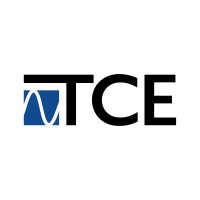
| Strategic Workforce Optimization | Enhanced Project Bidding Confidence | Advanced Forecasting and Scenario Planning |
|---|---|---|
| Bridgit Bench revolutionized TCE’s approach to workforce planning, providing a comprehensive platform for strategic labor allocation and addressing logistical challenges efficiently. | Bridgit Bench instills confidence in TCE’s leadership, enabling them to bid on larger projects with a clear understanding of resource availability. | Predictive planning transforms qualitative “what-if” conversations into actionable strategies, effectively allowing TCE to plan for multiple concurrent large-scale projects. |
“I think that above all else, Bridgit has given us a sense of confidence that we know where everyone is, who we have, and that we’re never missing anything. When it’s in your head, or it’s on that Excel sheet, you can’t really trust that information.”
Jacob Shavel, Innovation Manager, TCE
The Company
A legacy of engineering and operational excellence
Founded in 2005, TCE is one of New York’s premier infrastructure contractors, renowned for its expertise in delivering successful results on complex and time-sensitive subway and infrastructure projects. Their success is rooted in their engineering expertise and commitment to operational excellence.
As the company grew, so did the complexity of its work, especially around workforce planning. This led to a strategic partnership with Bridgit to optimize its staffing strategy and address logistical challenges. We spoke with their Innovation Manager, Jacob Shavel, about how Bridgit Bench gives them confidence in their labor allocations, how Bench integrates with the rest of their software stack, and being a people-first organization.
The Challenge
Scaling workforce planning during rapid growth
Recognizing a flawed workforce planning process began as TCE hit a massive growth phase. Shavel recalls, “The moment that really led us to go ‘we need to do something here’, was last summer when we were shortlisted for half a dozen MTA design-build jobs over the course of three weeks. It was over a billion dollars of work that we were going to bid and negotiate all in parallel.”
This was a turning point for the company, and the high stakes highlighted the pitfalls of their existing approach. As Shavel mentioned, “While we had problems with resource planning in the past, this was a moment that led the executive leadership to immediately go ‘the way we’re doing this is not good enough’.”
If they successfully secured these contracts, the logistical challenges of staffing them would be enormous. “When we win some of this work,” Shavel explained, “you’re looking at drastic hiring needs, not three or four people, but dozens. And there has to be a better way to do this.”
Shavel said their issues “were less about the system we were using and more about the problem in general.” A problem that presented itself in two key areas.
- Strategic planning – For the leadership, workforce planning was done entirely in their heads. Shavel explained, “It’s a huge burden, and it doesn’t matter how smart or capable you are. It’s difficult to keep 160 people in your head and also know where they live, their family situations, and all of the important factors that play into having happy and successful teams.”
- Employee welfare – It is vital to know what project they’re on, where they will be, and how they’ll get there and back.
The Solution
Helping to elevate resource management
When asked about the initial impressions after deciding to use Bridgit Bench, Shavel said: “I’ve got to give it up to the engineering team at Bridgit – the interface is fantastic, super intuitive, and the presentation layer makes it easy to look across our jobs by the individual level or portfolio level.”
This visualization was especially impactful for their leadership team during the assessment process, “it dawned on our leadership that they don’t have to see it all in their head anymore. The presentation layer singlehandedly justifies the purchase and simply works.”

In discussing the broader impact for TCE, Shavel described a period of positive transformation: “We’ve been going through an awesome stage of transformation here. We are bidding for bigger jobs, winning those jobs, then exceeding expectations when we do the work.”
The complexities arising from bidding for projects, especially design-build contracts, amplified the company’s need for a reliable workforce planning tool. These contracts often had stipulations regarding key personnel, adding layers of intricacy to the process.
Shavel pointed out a shift in the company’s confidence since implementing Bridgit Bench: “I think that above all else, Bridgit has given us a sense of confidence that we know where everyone is, who we have, and that we’re never missing anything. When it’s in your head, or it’s on that Excel sheet, you can’t really trust that information.”
The Impact
Strategic workforce optimization and confident bidding
The introduction of Bridgit Bench helped evolve TCE’s labor forecasting. He highlighted the tool’s capability for predictive planning, explaining, “A huge insight has been the ‘what if’ planning. What if we win that three-quarters of a billion-dollar job? What if we do win that and the other job we bid? Before that, it was a purely qualitative conversation. It’s now a practical conversation. We have a toolset to address it.”
What were once hypothetical scenarios are now actionable plans. Having a shared platform where the entire executive team can collectively visualize and strategize has been instrumental.
Shavel went into the intricacies of their bidding process, especially within the domain of the MTA and other public service agencies in New York City. He said, “The bidding process in our environment is hard to fathom for anyone who hasn’t done it. It moves fast, and there is a high level of ambiguity across many different verticals. Being able to simplify just a little piece of that is huge.…the confidence alone is enough. I don’t know how to put a dollar amount on that, and I don’t think you need to. That simplicity alone was worth the buy, and anything else we get is gravy.”
Working with Bridgit
Future-focused collaboration and innovation
Shavel is at the helm of establishing strategy and driving implementation for TCE’s technology stack. Bridgit Bench is smoothly integrated into their workflow, with BambooHR feeding comprehensive personnel data from their HR department.
This integration isn’t just about syncing databases; the conduit to crucial data drives decision-making. He adds, “One thing we’re working on right now is bringing in all our certification data from BambooHR. We’re working with our HR department to collect and verify OSHA certifications and other safety training.”
This will ensure all team members have the requisite certifications and that project assignments align with their qualifications.
Moreover, TCE commits to their team’s professional growth. Shavel points out their robust in-house development program and how, with Bridgit Bench, they’re primed to have a view of their team’s skill set, “knowing who has what in Bridgit will make these key personnel questions even easier to answer and make sure that we have the right people with the right skills.”
Shavel told us about another integration: “We’ve also started pushing information into Airtable. Once we have people assigned to projects, we can use the information from Bridgit, take it to the next place, and keep working with it on various internal planning processes.”
Bridgit is proud to be a critical tool in TCE’s toolkit, providing confidence to their executives to bid aggressively during this amazing period of growth. We look forward to future collaboration with the TCE Innovation Group as we expand and refine our product to serve our customers best.

